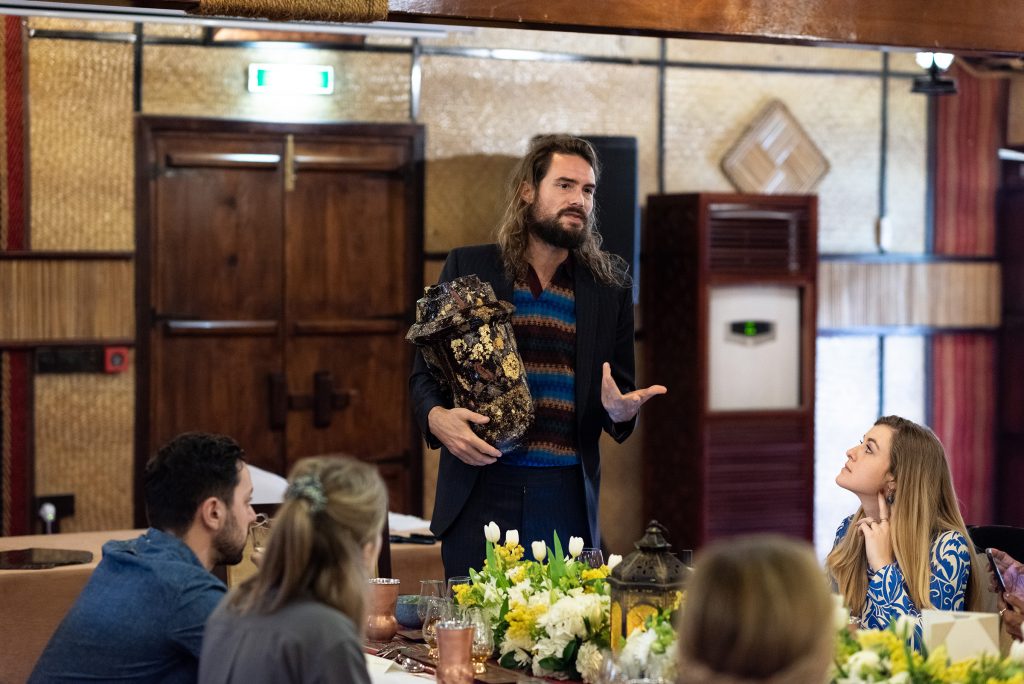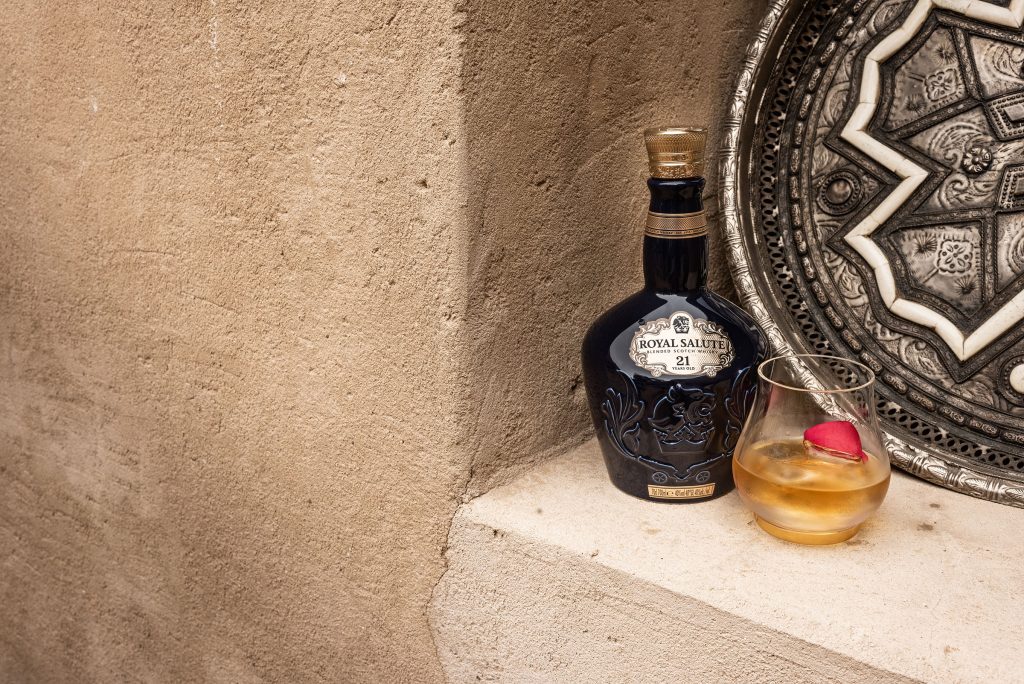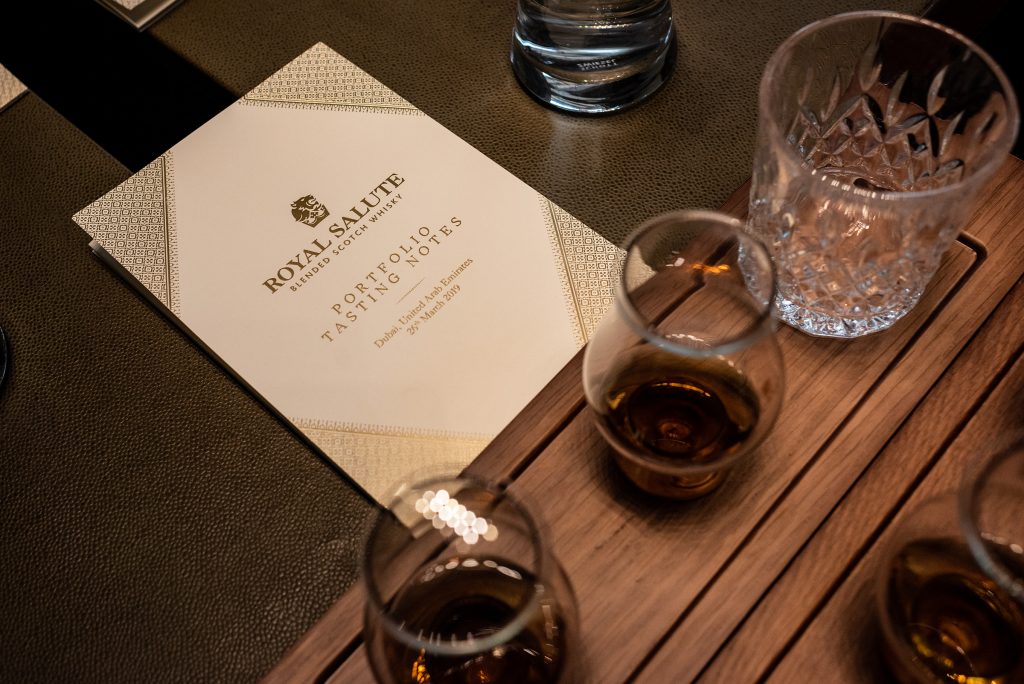Interview: Master Perfumer and Royal Salute 21 Whisky Consultant Barnabé Fillion
Exploring the ways in which scent combinations create and evoke memories

We know that the brain employs scent to trigger memories and feelings. Without your olfactory system running properly, smelling certain things would be difficult—and, of course, food and drinks would taste different too. Perhaps most importantly, your brain wouldn’t create lasting memories in the same way. On a recent trip to Dubai, we spoke with master perfumer and Royal Salute 21 whisky consultant, Barnabé Fillion to learn as much as possible from the expert in combining scents to evoke memories and how that plays into the world of whisky.

Can you tell us a little bit about your background? You mentioned having had an unconventional start in the industry.
I started perfumery when I was around 25, 26. I was doing photography before. My intention was not really to become a perfumer… I was assisting Helmut Newton and another photographer that I was lucky to work with. I was looking for, not an inspiration, but a way to collaborate in photography with the other senses. Meaning, working on synesthesia, which is still what I’m working on. And I found a perfumer that explained to me a little bit of the work. I really fell in love with the language of perfumery, the language used to describe sense and experience, olfactory experiences. We made a company and then from there I started to work with Aesop, which led to working with multiple brands.

What do you think is the biggest similarity between the photography and art that you were creating then and what you’re doing now?
I still work a lot with visuals actually when I’m creating a perfume. I think I’m always starting from an image, which is kind of blurry and full of textures. And little by little, the ingredients helps me to define that texture and define, I would say, the focus of the image.

What do you think is most important when you’re using your nose and your senses to get an understanding of, not just a perfume but also a whisky? What emotions are you be thinking about? What, to you, does it mean?
What I really try to invite you feel today [at an Olfactory Studio experience] is a real celebration of the senses—all of them. And it’s almost easy for me as a perfumer to do that with Royal Salute because the richness of the material that they are working with blending—the whisky is unbelievable. So we were talking about whisky that tasted like grass and green tea. With another one, we smelled pollen. And then another one had smoke. So, for me, it’s very, very similar to the infinite ingredients that I have in perfuming because I work with three dozen ingredients when I blend. It’s exactly the same you would do in a blended whisky.

You’ve talked about creating new scents and putting things together that maybe didn’t necessarily belong together at first—and blending them seamlessly. How do you decide that smokiness goes with a specific kind of grass or a specific kind of flower that maybe resembles pollen? How can you tell when two ingredients that are so different might go well together?
I guess it’s very subjective, but I’m not such an academic person in the olfactory world; I’m much more interested by the intuition associated with the process of creating. I need to be spontaneous.
How do you bring that spontaneity to Royal Salute when you’re working with them to create one of these 21-year-old whiskies? Or do they give you a specific brief?
It has been different each time. Sometimes I come with a brief I created myself and explain it to the team. Sometimes they have some stock of very beautiful whisky that they want to use and that was the reason—for example, maybe it’s from a distillery that doesn’t exist anymore. Or even a whisky where we don’t even know from which distillery it comes. There are a lot of stories like this that can create the brief.

What attracted you to working with the brand and taking on really such a unique role?
For me, the most amazing part of Royal Salute is the notion of the art of blending. This is their origin—the creation of their brand—because the founder of it, who is known as the godfather of the whisky industry, gave it as a gift to the Queen of England: a blended whisky. At that time people were looking at blended whisky not as an incredible thing, but something that you drink daily. But here we are talking about a blended whisky starting at 20 years old.
So, for me, it’s basically working with the best ingredients. I will say it’s like what I do with perfume, which is a quest for the best ingredients first. And then the art of blending, how you put them together. I like this idea of pushing the limits of the art of blending.

For somebody who’s new to whisky and scotch, can you give some advice for nosing?
I think two things you should feel when you’re drinking Royal Salute is the notion of time, how the time has been affecting the whisky. So you’re not drinking a 15-year-old whisky, you’re drinking a 21-year-old whisky. Second thing, the complexity is a very strong signature, meaning that there are different layers. The taste has been very, very well-elaborated and thought out. It means that you can taste it being green and vibrant at the beginning, almost like green grass and then you will end with something almost smokey and mineral. So, that level of journey into the taste is what you should expect of such a whisky. And something very important to pay attention it is the finish, always. How long that whisky will stay in your mouth and how much it will leave a footprint in you.
Images courtesy of Royal Salute












